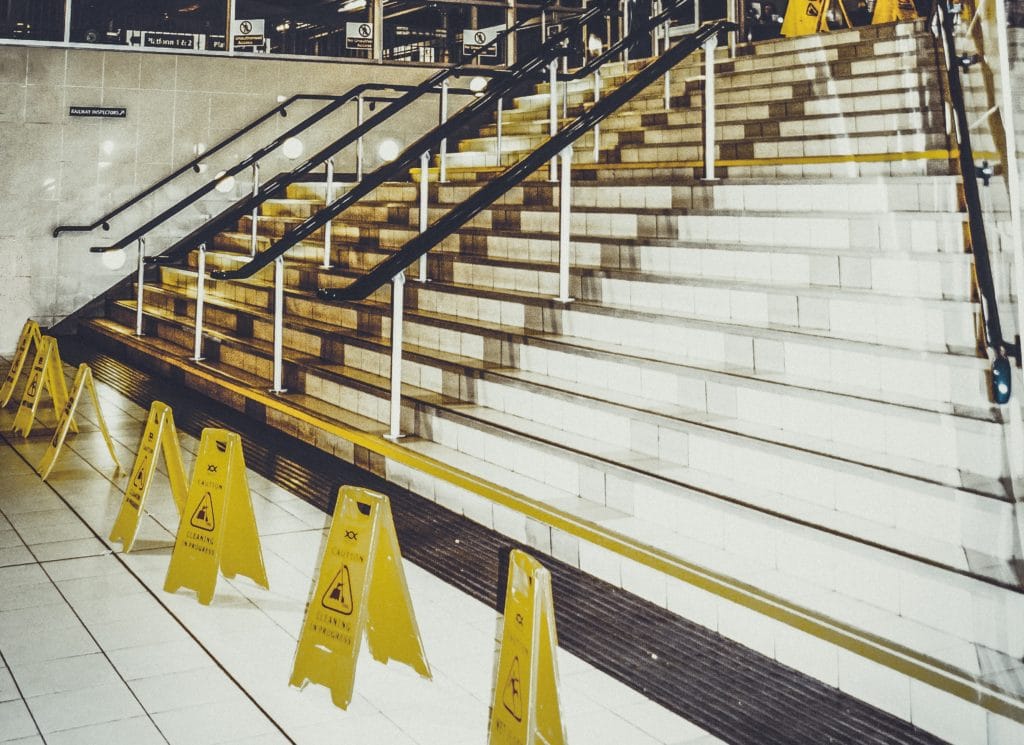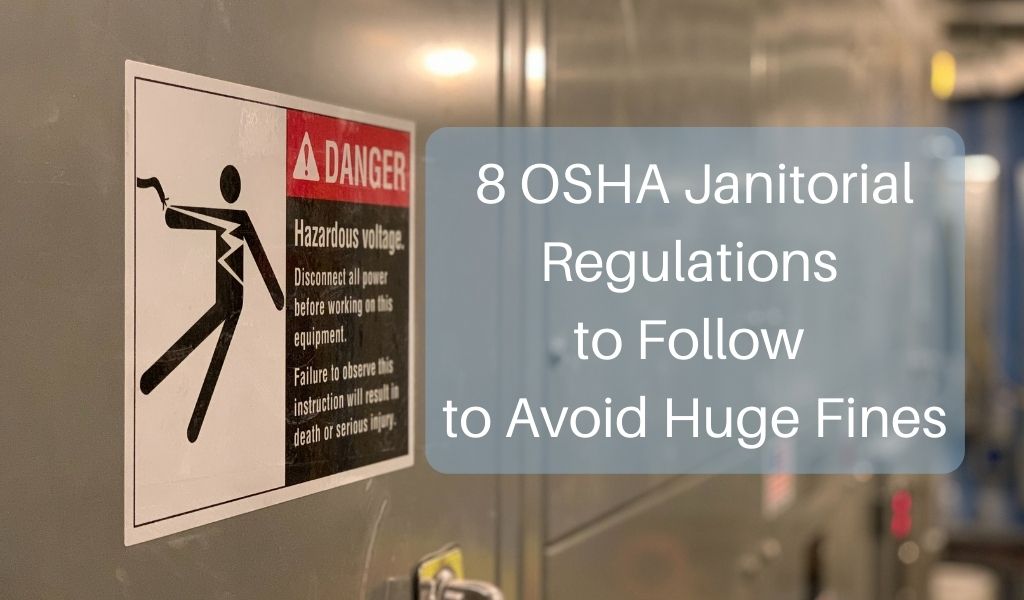Ignoring government standards can be dangerous and expensive. These are some of the most commonly cited OSHA janitorial regulations that can hurt your business.
Between October 2019 and September 2020, citations for failure to comply with OSHA janitorial regulations cost the custodial industry $213,579. If you’re like most cleaning companies, even a fraction of that amount would be detrimental to your business.
Not only are violations expensive, but they can hurt your reputation, and worst of all, they can put your workers and clients in dangerous situations.
That said, there are quite a few OSHA janitorial regulations, and they can be hard to keep up with. To help you out, here’s a list of some of the most frequent infractions you’ll want to avoid. Remember, this list is in no way exhaustive—it is simply a quick reference for your convenience. For complete information on OSHA standards, we recommend you visit their website.
Manage employee performance, monitor jobs, remain compliant, and so much more with Janitorial Manager. Sign up for a free demo today to learn more!

8 Easy-to-follow, yet frequently cited, OSHA janitorial regulations
1. Hazard Communication
The standard most commonly cited is also one of the most straightforward OSHA janitorial regulations to comply with. Established in 1994, the Hazard Communication Standard requires that cleaning businesses provide written information to their employees about hazardous chemicals used in the course of business and stored on site. The information must be clear and understandable by every employee, regardless of their native language or reading ability. The employer is required to label all chemicals with this information, including hazard classification, and the employer must maintain safety data sheets at each job site where chemicals are used. In addition to making this information available, you are also responsible for training employees on the proper handling of each chemical before they begin working for you.
2. Respiratory Protection
Another frequent violation of OSHA janitorial regulations has to do with respiratory protection. Custodial work brings with it an increased risk of employees coming into contact with harmful dust, vapor, mist, sprays, and a variety of other lung irritants. Some of these elements can cause serious health problems or even death. That’s why OSHA requires cleaning businesses to make protective gear available to their employees at all times. It’s also mandatory to train employees on the proper use of respiratory protective equipment since wearing a respirator or mask the wrong way can render the device ineffective.
This standard is essential while COVID-19 is still hanging around. You can bet that OSHA has applied and will continue to apply extra scrutiny to compliance with this regulation. While only nine citations were handed out in the last year, they cost businesses over $22,000, making this one of the most expensive violations to commit.
3. Control of hazardous energy
Custodial workers will surely come into contact with all different types of energy, including electrical, chemical, and thermal, to name just a few. These energies can be hazardous if not properly controlled, which is why OSHA janitorial regulations are so strict on this matter. Their guidance requires a cleaning business to have proper lockout/tag-out procedures to protect workers and prevent the unexpected release of dangerous energies. Again, it is the employer’s responsibility to ensure that their workers are appropriately trained on these procedures and, if necessary, equip them with the skills to follow protocol safely.
A mere six citations were handed out in one year totaled $34,354 in fines—the costliest violation of all, by far.
4. Fall prevention
Falling on the job is probably one the most common workplace accidents, resulting in injuries (sometimes severe), workers’ compensation claims, lawsuits, and OSHA fines, among other things. Every employer must ensure that all of their worksites—which can be numerous for the cleaning business—protect against the likelihood of a slip and fall accident. Floor holes must be covered and secured at all times, as well as holes in walls. Rails should be installed on staircases and any other surfaces higher than four feet off the ground. Some job sites may even require safety harnesses, nets, or other equipment to protect against falls. And while OSHA janitorial regulations don’t require it, we suggest it’s also a good idea to notify employees of any dangerous areas where falls may be more likely.
5. Face and eye protection
In addition to respiratory protection, workers should have access to other personal protective equipment (PPE), such as dust masks, safety goggles, and disposable gloves. These items should be regularly stocked and, if reusable, properly cleaned after each use. (Protective gloves should always be thrown out immediately after a single-use, followed by a proper hand wash.) Again, since the pandemic, this standard is even more important as all businesses must provide everyone with PPE at no cost to the employees.
Violations of this standard racked up over $16,000 in penalties last year. That’s an awful lot more than it costs to purchase and provide PPE regularly, not to mention that adhering to the standard keeps your employees safe.
6. Training requirements
Failure to properly train your employees goes against OSHA janitorial regulations. Make sure you document this training well! While the fines aren’t as significant for this, they still come out to more than you would probably spend on proper training. If you need a refresher on OSHA training requirements, they provide many useful resources to help keep you on track.
7. Recordkeeping
Although it can seem like a lot and it is sometimes confusing, keeping accurate and updated records will help keep OSHA inspectors at bay. Recording criteria, forms, and annual summaries are three data-related areas where the Administration issued citations last year. These can sometimes be the most frustrating fines, not because they’re so expensive, but because even if you adhere to every other OSHA standard, you can still get dinged on something as simple as forgetting to record something.
8. Bloodborne pathogens
Finally, if any of your work sites are healthcare facilities, make sure you’re familiar with OSHA’s Bloodborne Pathogens Standard. A single violation will run you more than $3,000, not to mention that bloodborne accidents and illnesses can be some of the most dangerous incurred on the job.
Most of these regulations are easy to follow. As long as you keep your inventory updated and onboard and train your team well, you can keep money in your bank account instead of using it to pay fines.
Streamline all your workflows, including inventory management, scheduling, job bidding, and more with Janitorial Manager. Check out a free demo to see all the great features we offer!

